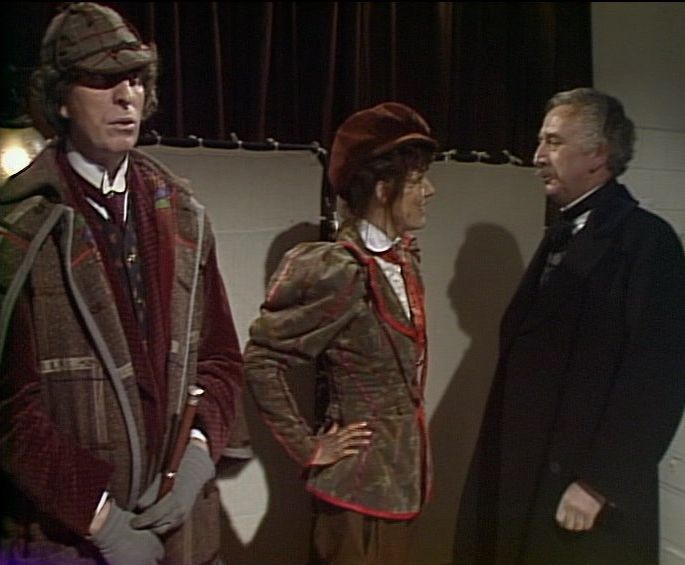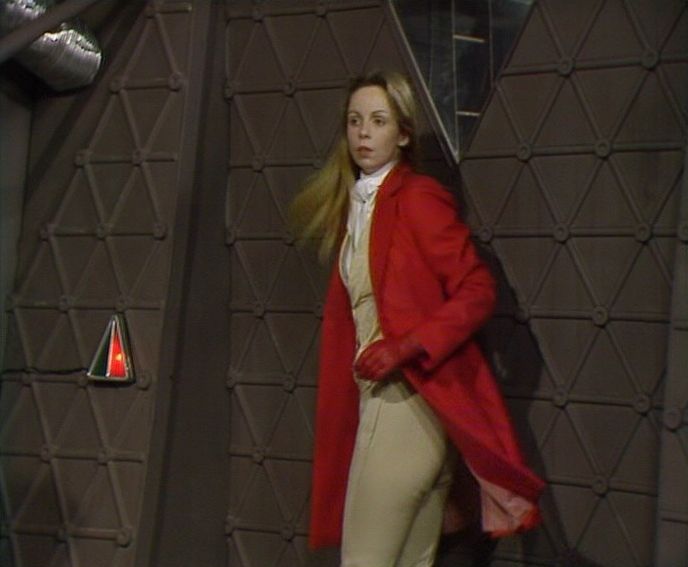
It’s slightly odd to think that during the eighties Horror of Fang Rock wasn’t a story with a terribly good reputation. But then this was the decade (in British fandom certainly) when many of us only had very limited access to the series’ past, so we had to rely on what DWM or the fanzines of the day told us was true.
And since Graham Williams was still persona non grata for many, Horror was often lumped in with the majority of the other stories from this period as something of a disappointment. Only City of Death managed to escape this chorus of disapproval.
It’s interesting that part four opens with what we later learn to be the shape-shifting Rutan (still looking remarkably like Rueben) running into Vince for a brief and (on Vince’s part) painful meeting. Had Vince been killed at the end of part three then the actor wouldn’t have received a fee for the final instalment (this seems a trivial matter, but Doctor Who, like many other series of the time, tended to be quite frugal about matters like this).
I wonder if the original plan had been to end part three with Vince’s death? It would have been a strong cliffhanger, especially since it would have immediately followed the Doctor’s weary statement that he’d been wrong all along about their mysterious foe.
But no matter, Vince now bites the dust and Adelaide follows him shortly after. This leaves Skinsale as the last man standing, apart from the Doctor and Leela. Whilst Leela and Skinsale head off to find a weapon to use against the Rutan, the Doctor settles down for a friendly chat with the glowing green blob.
If one were being critical, then it’s probably fair comment that part four does somewhat dribble to a conclusion. The Rutan (looking rather like – I’m sorry – a large piece of green snot) and the Doctor have a nice little natter for a few minutes which rather slows the story down. That Dicks chose a Rutan as the monster is a nice nod to Holmes (Holmes had already named them as the age-old enemies of his creations, the Sontarans). Or it could just be that Dicks was running short of inspiration …..
As is often the way with even the most repellent of monsters, they tend to be very garrulous once you get them talking (a fact which Dicks slyly drops into the script) and the Doctor now knows exactly what he has to do. Destroy the Rutan mothership – which is shortly due to land – and the rest of the Rutan fleet will scoot off to look for easier pickings elsewhere.
This is a little hard to swallow, but it’s even harder to believe that the Doctor could rig the lighthouse’s lamp into a deadly ray with little more than a dash of ingenuity and a diamond from Palmerdale’s body belt. It’s easy to criticise the modern series for plucking solutions out of the air, but this is just as bad.
Since Dicks wrote both the script and the novel, there’s one small change which has always interested me. Skinsale dies because he stays behind and scrabbles for Palmerdale’s extra diamonds. When Leela asks where Skinsale is, the Doctor tells her he died with honour. This is obviously not so and Dicks – when he penned the novelisation – chose to make this plain. Was it not originally played as Dicks wrote it, or did he take the later opportunity to tighten up a this slight plot oddity?
But even if the ending slightly disappoints, Horror of Fang Rock is still an essential story. Base-under-siege stories always work (although familiarity did breed contempt a little during the Troughton era) and thanks to the unusual lighthouse setting this one works better than most.
Finishing with a touch of Wilfrid Gibson doesn’t hurt either. “Aye, though we hunted high and low, and hunted everywhere, of the three men’s fate we found no trace. In any time, in any place. But a door ajar and an untouched meal and an over-toppled chair”.




























